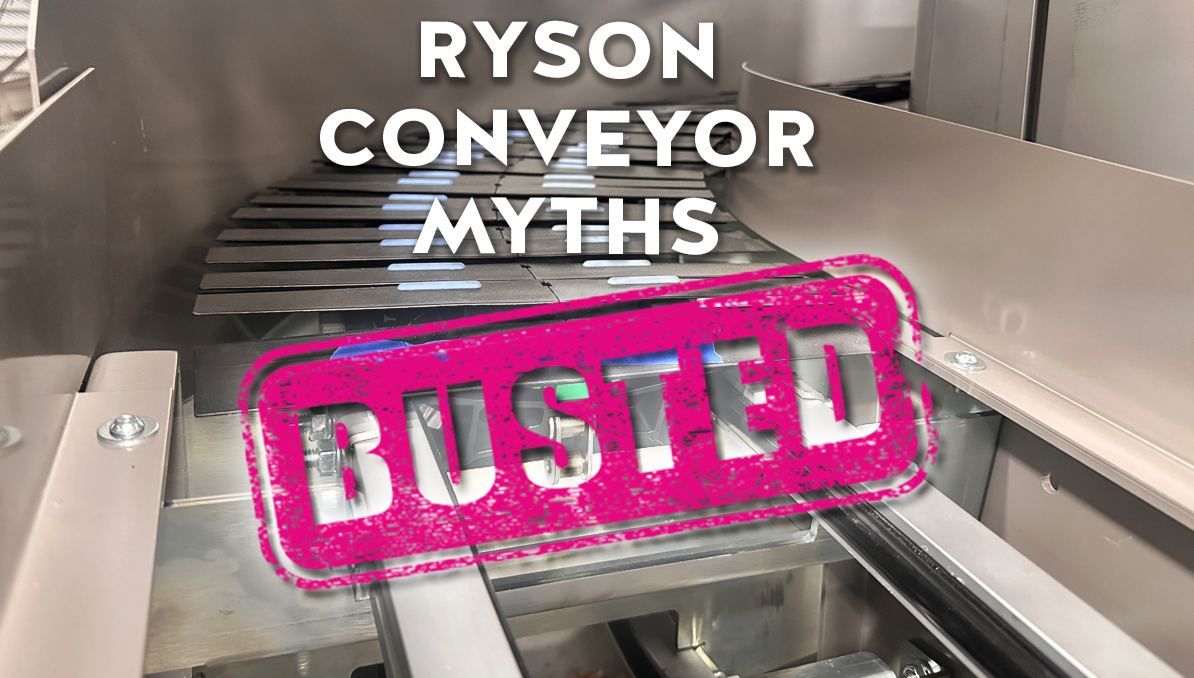 4 Ryson Spiral Conveyor Myths – Busted
4 Ryson Spiral Conveyor Myths – Busted
Spiral conveyors have become essential equipment in distribution centers, fulfillment hubs, and production lines worldwide, yet a few stubborn misconceptions still surface in conversations with plant managers and engineers. Let’s clear the air. Below are four spiral conveyor myths we hear most often—each one followed by the straight facts.
1. Myth: Products must stay perfectly centered on the conveying surface; otherwise the slats will deflect, break, or jam.

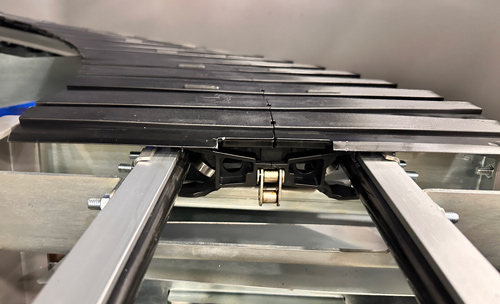 Centering is a recommendation, so that the product exits the Spiral centered. It is not due to the limitations of the slats. Ryson slats are designed with reinforcement to handle the weight distribution of the loads. Even if cartons slide off-center, the chain‑side supports carry the load without creating unsafe stress. Keeping items roughly centered simply removes the need for additional guiding components—nothing more. Ryson Spirals are also capable of transporting products side-by-side because our slats are very rigid and do not easily bend.
Centering is a recommendation, so that the product exits the Spiral centered. It is not due to the limitations of the slats. Ryson slats are designed with reinforcement to handle the weight distribution of the loads. Even if cartons slide off-center, the chain‑side supports carry the load without creating unsafe stress. Keeping items roughly centered simply removes the need for additional guiding components—nothing more. Ryson Spirals are also capable of transporting products side-by-side because our slats are very rigid and do not easily bend.
2. Myth: A spiral made from bolted sections can’t survive a seismic event; the tower will come apart.

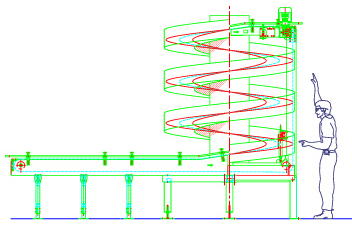 Our modular, bolted design is built for seismic zones. The joints lock the column together like segments of a steel spine, allowing the structure to flex within engineered limits rather than crack. That’s one reason California—the most seismically active state in the U.S.—has more Ryson spirals in service than anywhere else. In fact, bolted joints perform better in dynamic loading than welded joints. Multiple real‑world quakes have proven the design again and again.
Our modular, bolted design is built for seismic zones. The joints lock the column together like segments of a steel spine, allowing the structure to flex within engineered limits rather than crack. That’s one reason California—the most seismically active state in the U.S.—has more Ryson spirals in service than anywhere else. In fact, bolted joints perform better in dynamic loading than welded joints. Multiple real‑world quakes have proven the design again and again.
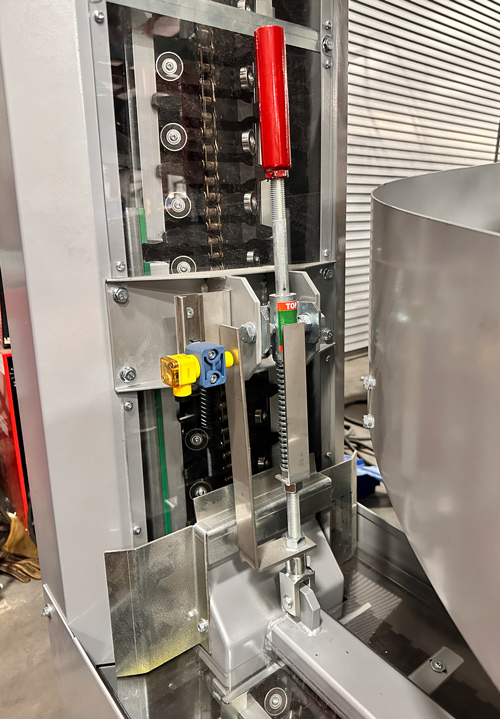 3. Myth: Ryson relies only on an air‑cylinder system to set chain tension, so you must supply compressed air.
3. Myth: Ryson relies only on an air‑cylinder system to set chain tension, so you must supply compressed air.
 Air tensioning is one option. For sites without compressed‑air utilities (or where you’d rather keep everything mechanical), we fit a spring tensioner that delivers the same consistent take‑up force. Choosing between air and spring is simply a matter of what works best for your facility, not a limitation of the spiral. We do however recommend using a pneumatic tensioner if the spiral will be reversible, since pressure needs may fluctuate between up and down operation.
Air tensioning is one option. For sites without compressed‑air utilities (or where you’d rather keep everything mechanical), we fit a spring tensioner that delivers the same consistent take‑up force. Choosing between air and spring is simply a matter of what works best for your facility, not a limitation of the spiral. We do however recommend using a pneumatic tensioner if the spiral will be reversible, since pressure needs may fluctuate between up and down operation.
4. Myth: You can’t stop a spiral when fully loaded and expect it to restart without issues.

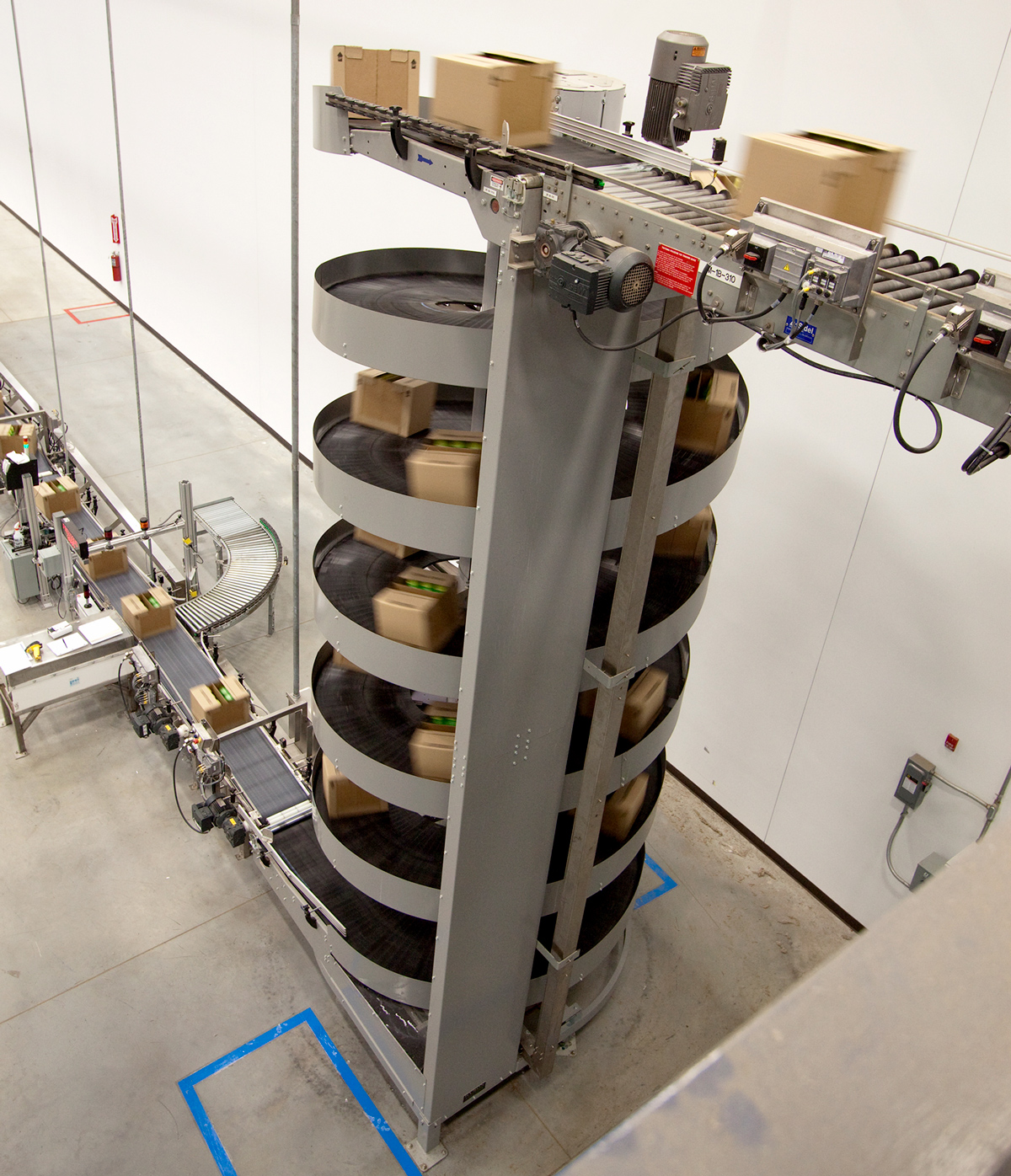 Ryson spirals are designed to start and stop while fully loaded. The drive package, chain, and slats are sized to handle the static load and the inrush current at start‑up. Many integrators even tie the spiral into scan‑based or zone‑fill controls that halt traffic momentarily—then bring everything back online smoothly. This is also a reason Ryson Spirals don’t require sliding side-support, our design uses a rolling friction support structure, facilitating an easy glide of our chain, and allowing us to start and stop fully loaded. Our High Capacity Spirals can easily start and stop with up to 3,600 lbs. of load.
Ryson spirals are designed to start and stop while fully loaded. The drive package, chain, and slats are sized to handle the static load and the inrush current at start‑up. Many integrators even tie the spiral into scan‑based or zone‑fill controls that halt traffic momentarily—then bring everything back online smoothly. This is also a reason Ryson Spirals don’t require sliding side-support, our design uses a rolling friction support structure, facilitating an easy glide of our chain, and allowing us to start and stop fully loaded. Our High Capacity Spirals can easily start and stop with up to 3,600 lbs. of load.
Key Takeaways
-
Built for real‑world conditions. Slightly off‑center cartons, scheduled stops, and seismic codes are part of everyday material‑handling life; Ryson spirals are engineered with that reality in mind.
-
Flexible by design. Whether you need air or spring tensioning—or both in different areas of the plant—our Spirals are flexible and made to order.
-
Proven track record. Thousands of installations, including hundreds in seismic zones, back up the facts above.
- Lower cost of ownership. Our modular design and highly efficient chain-slat arrangement provides a smooth and reliable conveying surface that requires minimal maintenance. Our Spirals have a proven track record of up-time and longevity.
Have another question or a challenge you’d like solved? Reach out—our applications team is always glad to help. Check out our YouTube channel for some application videos.



